Ancient Mystery Of The Tomb Of Tiryns – Burial Place For An Unknown Mycenaean Hero?
Jan Bartek - AncientPages.com - There is an interesting ancient mystery on the west slope of Profitis Ilias Hill on the Cyclades Islands in Greece. At the site, you'll find a beautiful small chapel dedicated to Profitis Ilias (Prophet Ilias) and a curious ancient tomb built for an unknown Mycenaean hero.
As the name suggests, the sacred islands are associated with the mysterious Cycladic culture. This Bronze Age culture is famous for its prehistoric Cycladic figurines carved in marble. These magnificent very ancient artifacts appeared in the Cycladic society many centuries before the arising of the famous Minoan Civilization.
Cyclopean masonry at Tiryns walls, Greece. Credit: Nick Stenning - Flickr
In 1913, archaeologists excavating around the citadel of Tiryns on Profitis Ilias Hill came across a beehive structure. Later investigations revealed it was a tholos tomb.
“Strange ancient domed structures, commonly called “beehive tombs”, also known as Tholos tombs, have been found in many places around the world. What is odd about these ancient structures is that they are referred to as tombs, and yet no burial remains have been found inside them.
The most impressive beehive structure is perhaps the tomb or treasury of Atreus, sometimes called the Tomb of Clytemnestra in Mycenae Greece.” 1
When scientists examined the ancient tomb of Tiryns, they knew they had stumbled upon something interesting but difficult to solve. The 13 m long and almost 3 m wide tomb was in excellent condition, but it was empty. The entrance portal of the tomb was decorated with wall paintings of spirals, and no sarcophagus was inside. Scientists searched for ancient artifacts that could reveal why this tomb was built and for whom, but no Mycenaean pottery at all was found inside the tomb.
How can we explain the absence of a sarcophagus and burial artifacts?
Did you know? The Minoans appeared to have possessed remarkable technologies; one of them was the creation of tiny, wonderful seals, which were skillfully carved out of soft stones, ivory, or bone. Here you see finds from the Ideon Cave. Left: A piece of gold jewelry - Right: Ivory seals. Image via Explore Crete - Read more
One possible explanation is that something was placed inside the tomb, but the burial place was looted in Roman times. Another possibility is the tholos tomb was never used at all.
“Its construction is contemporary with the third building phase of the citadel. As Protocorinthian and black-figure sherds found in the cist and in the dromos confirm, the tomb must have been open already in that period. The kind of finds suggests a hero cult. In the Roman imperial period, the interior was converted into an oil-pressing installation.” 2
Masonry tunnel was found at the site. Credit: Alun Salt - Flickr
In 1915, archaeologists discovered several ancient tombs not far from the Mycenaean citadel Profitis Ilias Hill. It was rather obvious the ancient tombs were part of a cemetery where the Mycenaean civilization buried their dead. Still, most of the tombs were empty and had been looted in antiquity. However, despite the lack of grave goods and burial bodies, scientists did make a great archaeological discovery at the site. They found a beautiful gold ring from the so-called 'Tiryns treasure.' It was the largest Mycenaean signet ring yet found and a masterpiece of the Mycenaean seal engraver's art.
Gold signet ring from the "Tiryns treasure" of Mycenae. Dated to the 15th century B.C. Image source
“The bezel is deeply engraved with an important ritual scene, while the annulus is decorated in relief. In the ritual scene, a female deity sits on a throne on the far left resting her feet on a footstool. She wears a long clerical garment and cylindrical hat and raises a conical cup or rhyton with her right hand. Four lion-headed daemons carrying libation ewers walk in procession towards the goddess. Various other elements, such as a bird (possibly an eagle), an incense burner atop a short column, and the sun and moon, emphasize this scene's religious character.” 3
We will never know who was meant to be put to eternal rest in the tomb of Tiryns, but the burial place was most likely built for a cult Mycenaean hero who lived sometime between 1300 and 1400 B.C.
Updated on July 13, 2024
Written by Jan Bartek – AncientPages.com Staff Writer
Copyright © AncientPages.com All rights reserved. This material may not be published, broadcast, rewritten or redistributed in whole or part without the express written permission of AncientPages.com
Expand for referencesMore From Ancient Pages
-
 47,000 Years Of Aboriginal Heritage Was Destroyed In Mining Blast – Results From Juukan Gorge Show
Featured Stories | Jul 22, 2024
47,000 Years Of Aboriginal Heritage Was Destroyed In Mining Blast – Results From Juukan Gorge Show
Featured Stories | Jul 22, 2024 -
 Massive Menhir Champ Dolent Built By Fairies In Ancient Beliefs Of Brittany’s People
Featured Stories | Jan 13, 2025
Massive Menhir Champ Dolent Built By Fairies In Ancient Beliefs Of Brittany’s People
Featured Stories | Jan 13, 2025 -
 Stonehenge Is Older Than Mankind – Archaeologist Suggests
Archaeology | Apr 12, 2018
Stonehenge Is Older Than Mankind – Archaeologist Suggests
Archaeology | Apr 12, 2018 -
 Unexplained Encounters With Invisible Barriers – Mysterious Rays And Energy Fields
Featured Stories | Jul 17, 2018
Unexplained Encounters With Invisible Barriers – Mysterious Rays And Energy Fields
Featured Stories | Jul 17, 2018 -
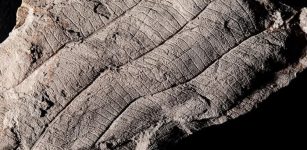 First Leaf Fossils Study Reveals An Ancient 4 Million-Year-Old Forest In Borneo
Fossils | May 3, 2022
First Leaf Fossils Study Reveals An Ancient 4 Million-Year-Old Forest In Borneo
Fossils | May 3, 2022 -
 Pyla-Koutsopetria: Complexity Of Ancient Fortifications Of Pyla-Vigla, Cyprus – Explored
Archaeology | Oct 15, 2019
Pyla-Koutsopetria: Complexity Of Ancient Fortifications Of Pyla-Vigla, Cyprus – Explored
Archaeology | Oct 15, 2019 -
 2,500-Year-Old Phoenician Shipwreck Being Rescued By Archaeologists
Archaeology | Jul 4, 2023
2,500-Year-Old Phoenician Shipwreck Being Rescued By Archaeologists
Archaeology | Jul 4, 2023 -
 Secret Kumari Kandam Continent And Links To Lemurians
Ancient Mysteries | May 18, 2020
Secret Kumari Kandam Continent And Links To Lemurians
Ancient Mysteries | May 18, 2020 -
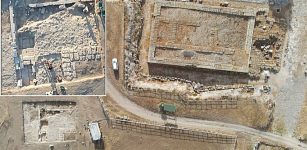 Previously Unknown Monumental Etruscan Temple Found Near The Tempio Grande, Vulci, Latium, Italy
Archaeology | Nov 10, 2022
Previously Unknown Monumental Etruscan Temple Found Near The Tempio Grande, Vulci, Latium, Italy
Archaeology | Nov 10, 2022 -
 Powerful Thunderbird Sent By The Gods To Protect Humans From Evil In Native American Legends
Native American Mythology | Mar 26, 2017
Powerful Thunderbird Sent By The Gods To Protect Humans From Evil In Native American Legends
Native American Mythology | Mar 26, 2017 -
 Major Puzzle In Mammal Skull Shape Evolution Solved
Evolution | Dec 20, 2023
Major Puzzle In Mammal Skull Shape Evolution Solved
Evolution | Dec 20, 2023 -
 Unsolved Mysteries Of Cahokia – What Really Happened With The Large Metropolis?
Civilizations | Jan 15, 2015
Unsolved Mysteries Of Cahokia – What Really Happened With The Large Metropolis?
Civilizations | Jan 15, 2015 -
 Archaeologists Begin Excavations Of A Sunken Zhiyuan Warship That Sank In 1894
Archaeology | Oct 7, 2015
Archaeologists Begin Excavations Of A Sunken Zhiyuan Warship That Sank In 1894
Archaeology | Oct 7, 2015 -
 On This Day In History: Peter The Great Defeats Charles XII Of Sweden At The Battle Of Poltava – On June 28, 1709
News | Jun 28, 2016
On This Day In History: Peter The Great Defeats Charles XII Of Sweden At The Battle Of Poltava – On June 28, 1709
News | Jun 28, 2016 -
 Unique 1800-Year-Old Roman Coin Unearthed On Southern Carmel
Artifacts | Mar 1, 2021
Unique 1800-Year-Old Roman Coin Unearthed On Southern Carmel
Artifacts | Mar 1, 2021 -
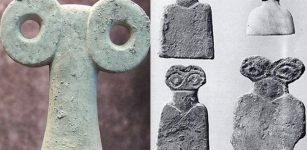 Remarkable Ancient Statues From The Eye Temple – Unique Legacy From Tell Brak, Syria
Artifacts | Jul 20, 2018
Remarkable Ancient Statues From The Eye Temple – Unique Legacy From Tell Brak, Syria
Artifacts | Jul 20, 2018 -
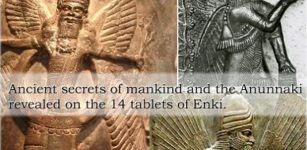 Ancient Secrets Of Mankind And The Anunnaki Revealed On The 14 Tablets of Enki
News | Jun 18, 2014
Ancient Secrets Of Mankind And The Anunnaki Revealed On The 14 Tablets of Enki
News | Jun 18, 2014 -
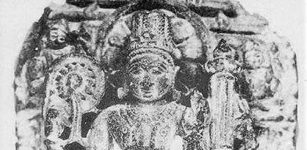 Dwarka – Pre-Harappan City That Could Rewrite The History Of The World
Civilizations | Aug 19, 2014
Dwarka – Pre-Harappan City That Could Rewrite The History Of The World
Civilizations | Aug 19, 2014 -
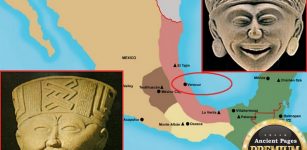 Curious Pre-Columbian Clay Figurines With Smiling Faces From Veracruz
Ancient Mysteries | Jan 29, 2018
Curious Pre-Columbian Clay Figurines With Smiling Faces From Veracruz
Ancient Mysteries | Jan 29, 2018 -
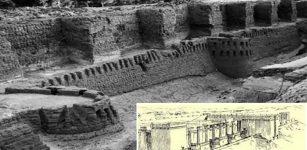 Massive Fortress Buhen In Ancient Capital Of Egyptian Nubia
Archaeology | Mar 20, 2017
Massive Fortress Buhen In Ancient Capital Of Egyptian Nubia
Archaeology | Mar 20, 2017





